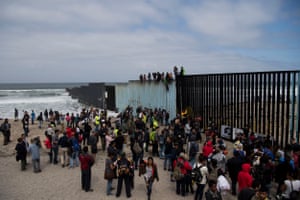D
The potency of Trump’s wall – for his supporters and his detractors – stems from its simplicity. Build it tall, build it wide – he has pledged 1,000 miles of it – and America will be safe again.
But how does that uncomplicated notion compare to the complexity of the border itself? Taken as a whole, the 1,954 miles of US-Mexican border is a place of astounding diversity – of terrain, of land-use, of city and countryside, of ethnicity. It traverses desert, river, mountain and sea.
There is diversity, too, of political view among the 7.5 million people who live in US border counties. Some are ardent backers of Trump’s wall. Others see their future, and the future of America, as being inextricably linked to that of their neighbor to the south.

Comments
Post a Comment